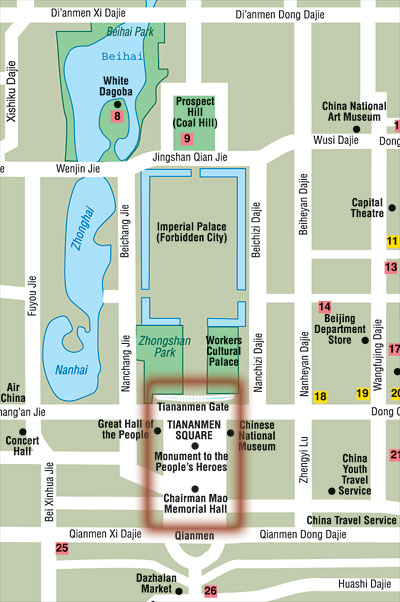

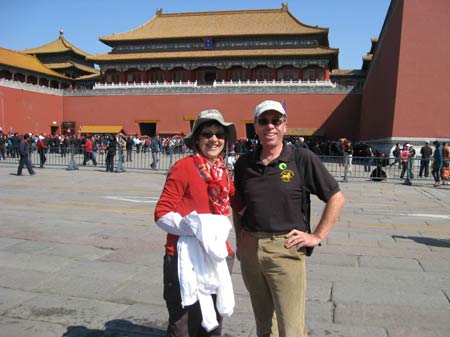

The Forbidden City was the Chinese imperial palace from the Ming Dynasty to the end of the Qing Dynasty. It is in the centre of Beijing. For almost five centuries, it served as the home of the Emperor, as well as the ceremonial and political centre of Chinese government.
This place is vast. Built from 1406 to 1420, the complex consists of 980 surviving buildings spread over 720,000 square metres. The palace complex is described as traditional Chinese palatial architecture.
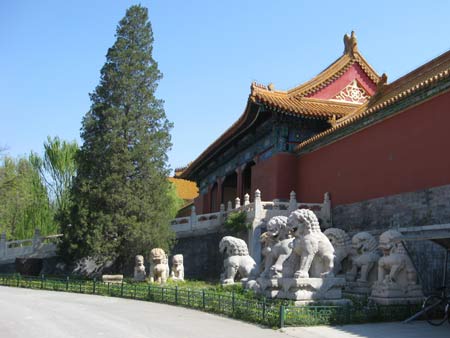

After being the home of 24 emperors—fourteen of the Ming Dynasty and ten of the Qing Dynasty—the Forbidden City ceased being the political centre of China in 1912 with the abdication of Puyi, the last Emperor of China. Under an agreement with the new Republic of China government, Puyi remained in the Inner Court, while the Outer Court was given over to public use, until he was evicted after a coup in 1924. In 1933, the Japanese invasion of China forced the evacuation of the national treasures in the Forbidden City.
After the establishment of the People's Republic of China in 1949, some damage was done to the Forbidden City as the country was swept up in revolutionary zeal. During the Cultural Revolution, however, further destruction was prevented when Premier Zhou Enlai sent an army battalion to guard the city.
The Forbidden City was declared a World Heritage Site in 1987 by UNESCO. It is currently administered by the Palace Museum, which is currently carrying out a sixteen-year restoration project to repair and restore all buildings in the Forbidden City to their pre-1912 state.

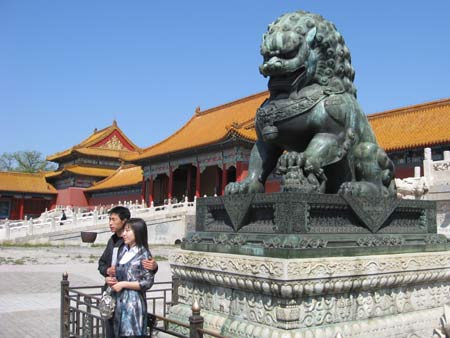
Once inside the Forbidden City, we followed the crowds. Well you couldn't but follow the crowds, you were carried along by them. The consensus seems to be that the Forbidden City receives about 8 million visitors per year. From what we saw, that figure seems on the low side!
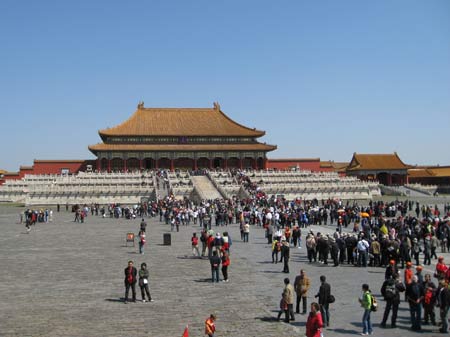
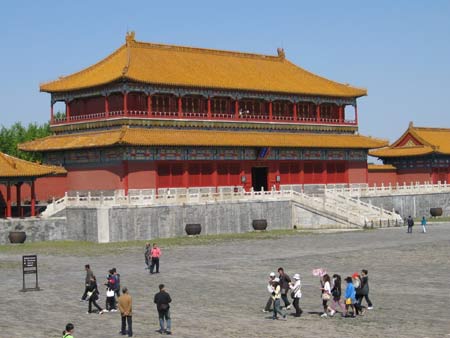
One walked down the central concourse, but there were building off to the sides, which did not receive the same amount of attention from visitors.


The detail was amazing, from the ornamental pots to the intricate carvings on the buildings.

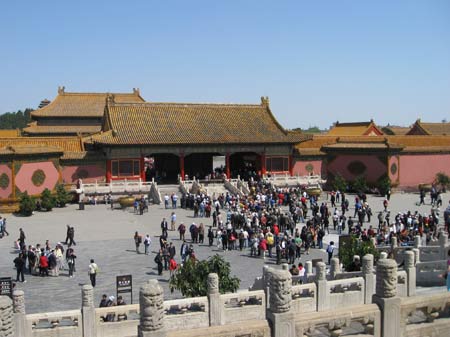
Each of the central buildings had a name and a purpose and a history. Though after a while they merged into one, and I don't think we could have completed the exam at the end, had there been one.
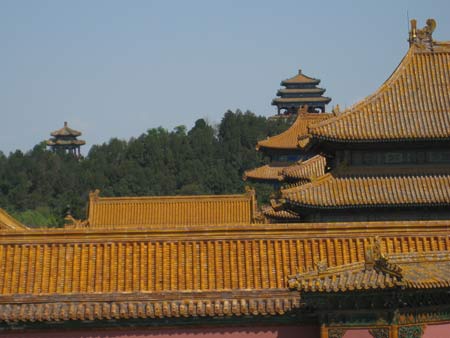
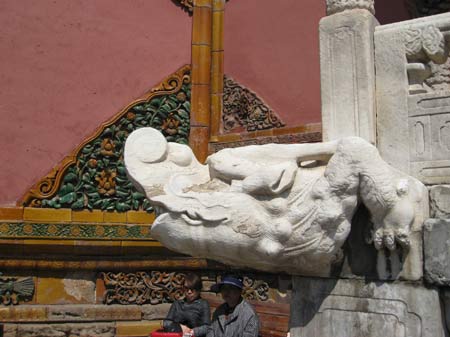
Above and beyond the roofs of the Forbidden City was greenery and pagoda like building - odd when you consider that we are in the centre of the city of Beijing.

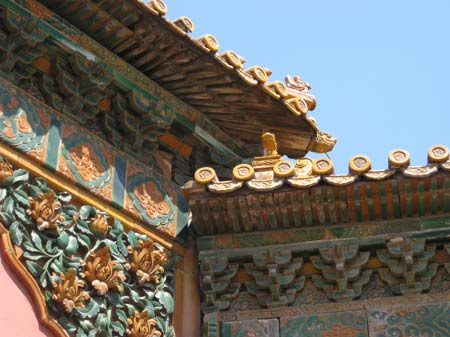
The detail was apparent everywhere one looked, on the walls, on the roofs ..
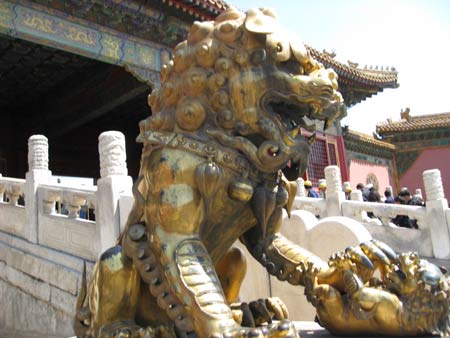
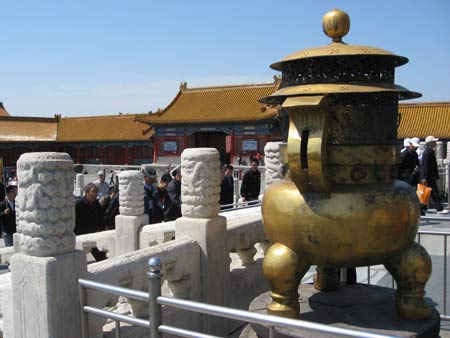
..and in the ornaments and statues that were liberally scattered, usually on the steps that led up to each of the central buildings

The punters were mainly Chinese, and they tended to travel in groups with a group leader. Here you can see such a group, all wearing the same hats for ease of identification in the crowds, gathering round for a travelogue. On the left of the photo, on the balcony, you can see the flags that tour leaders use as rallying points for each of their groups.
Back in the bus, our next stop was the Temple of Heaven